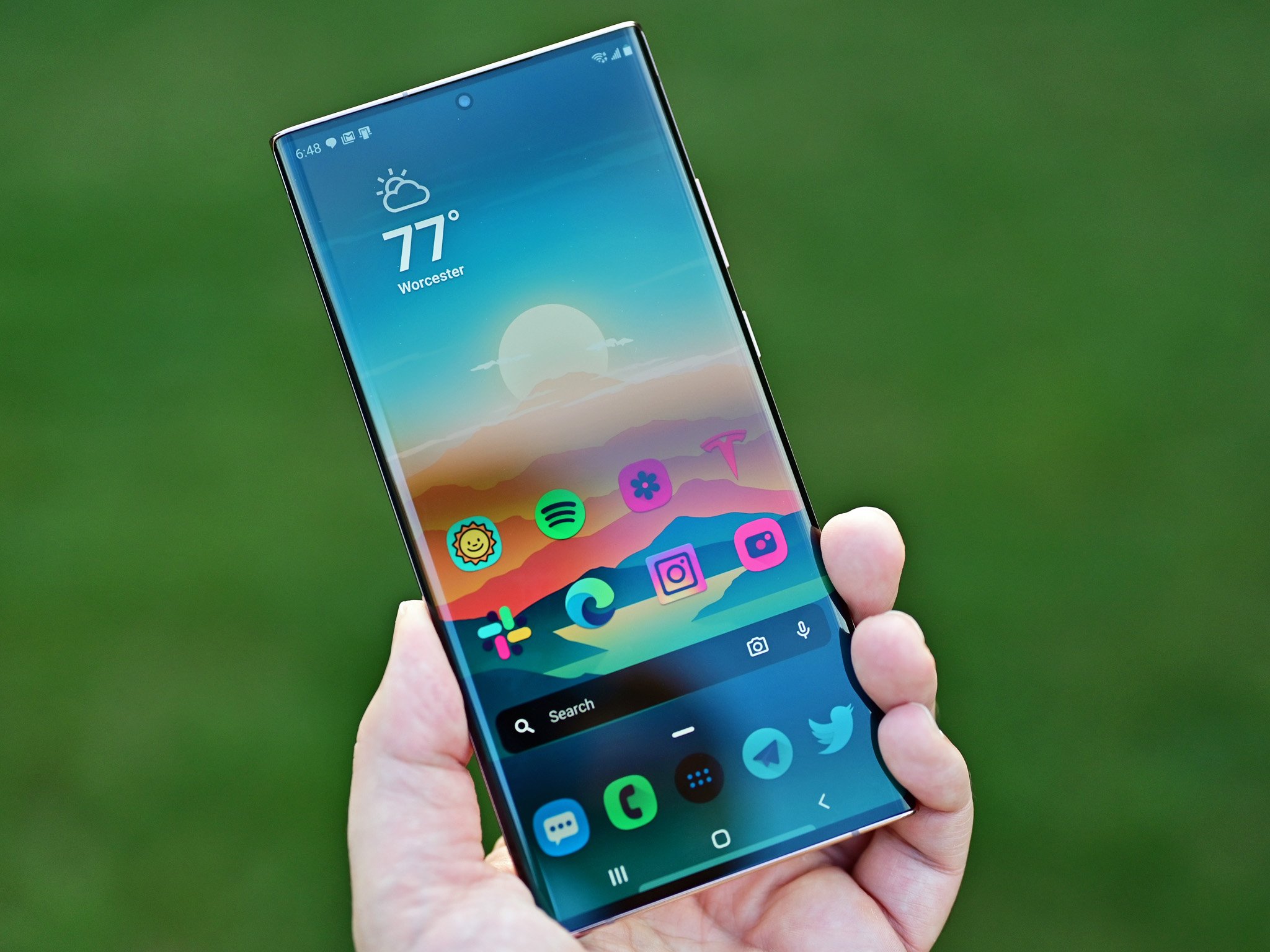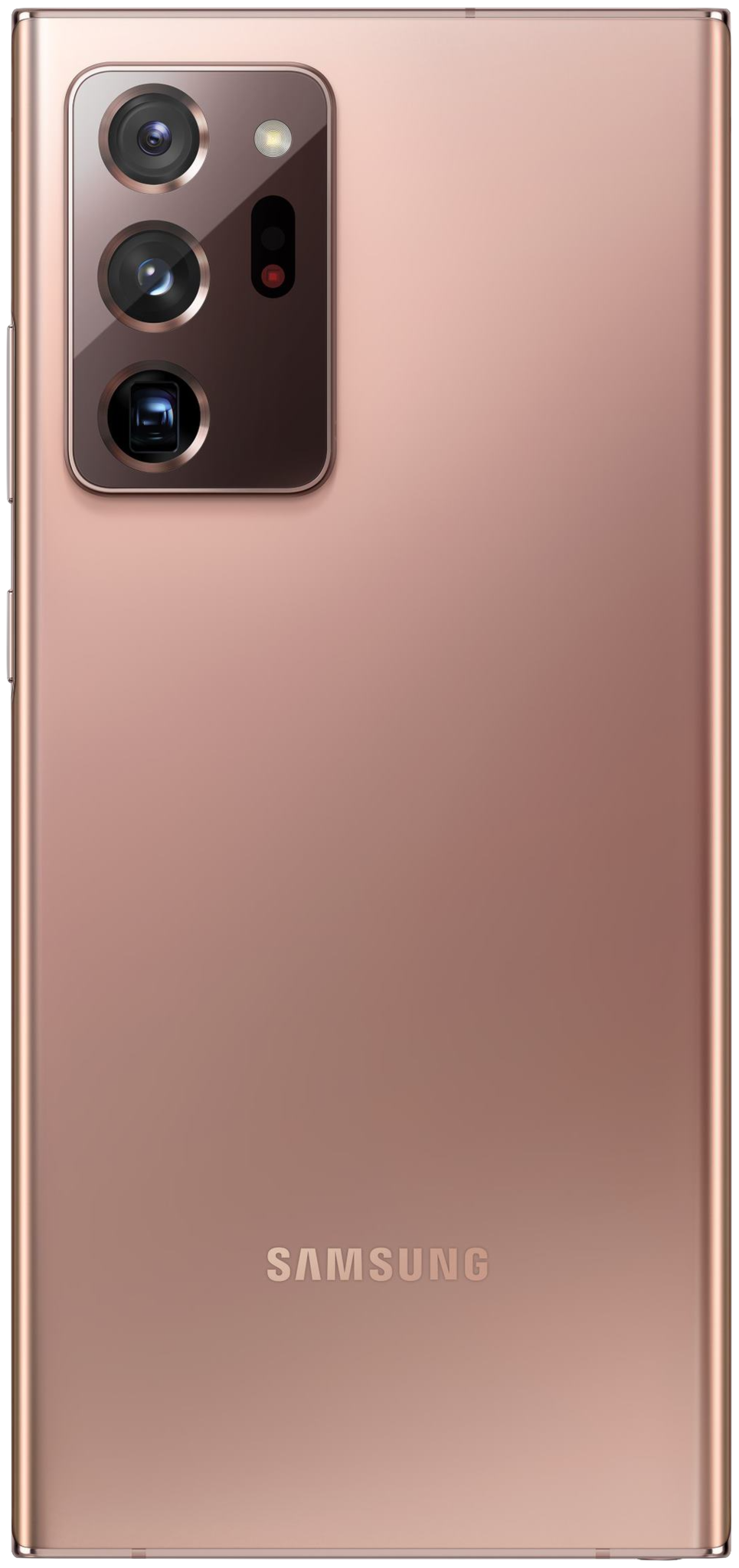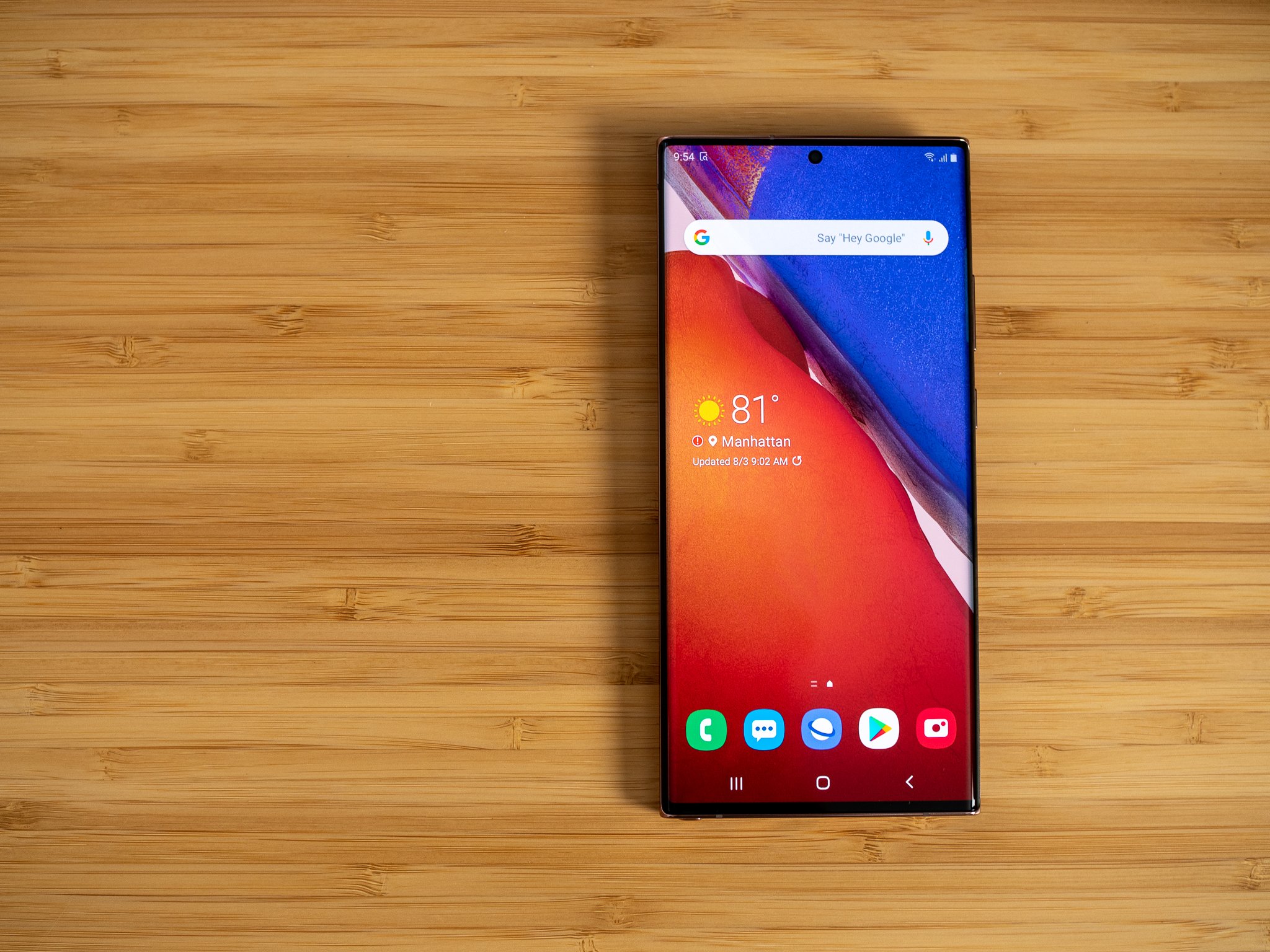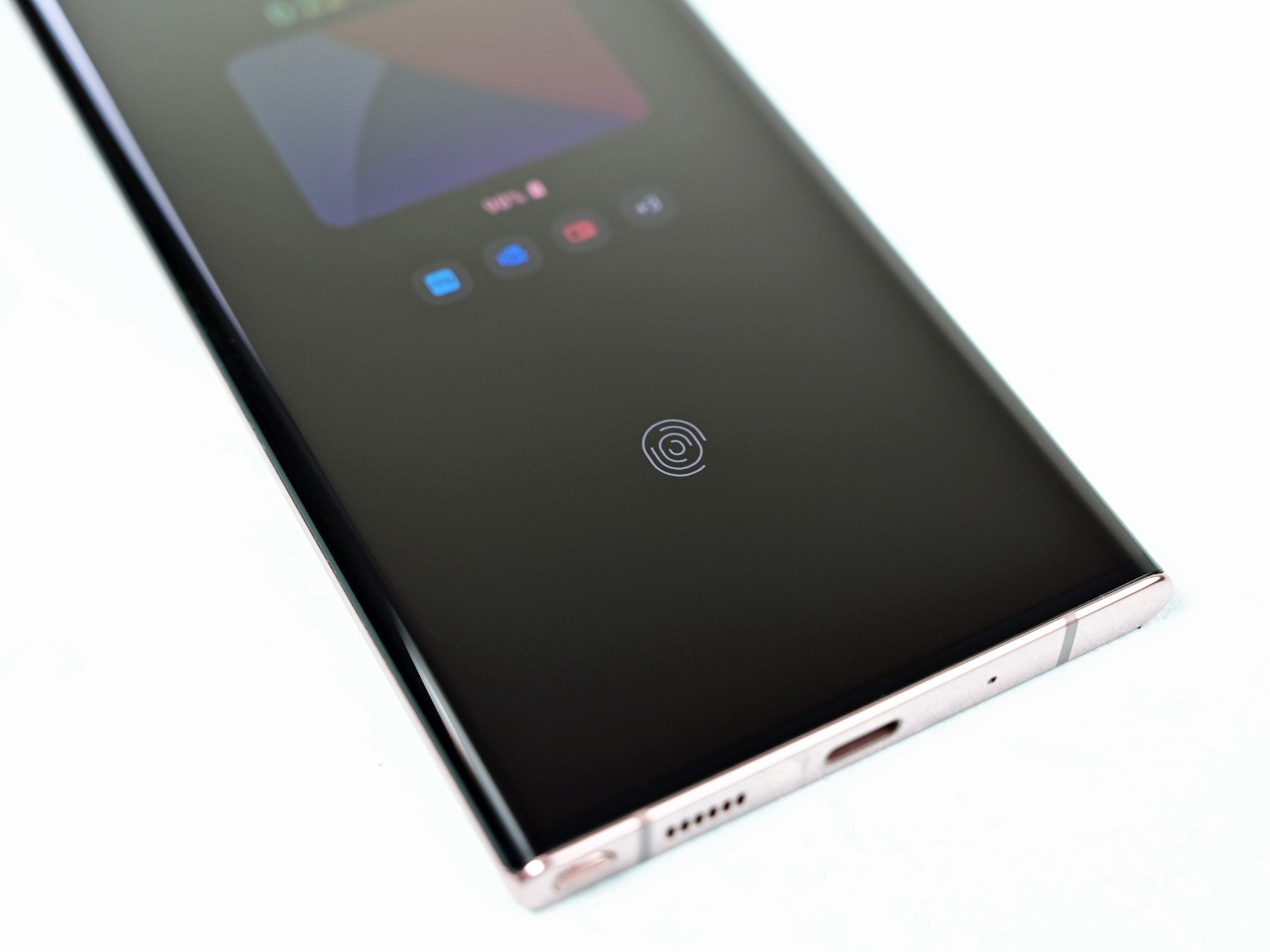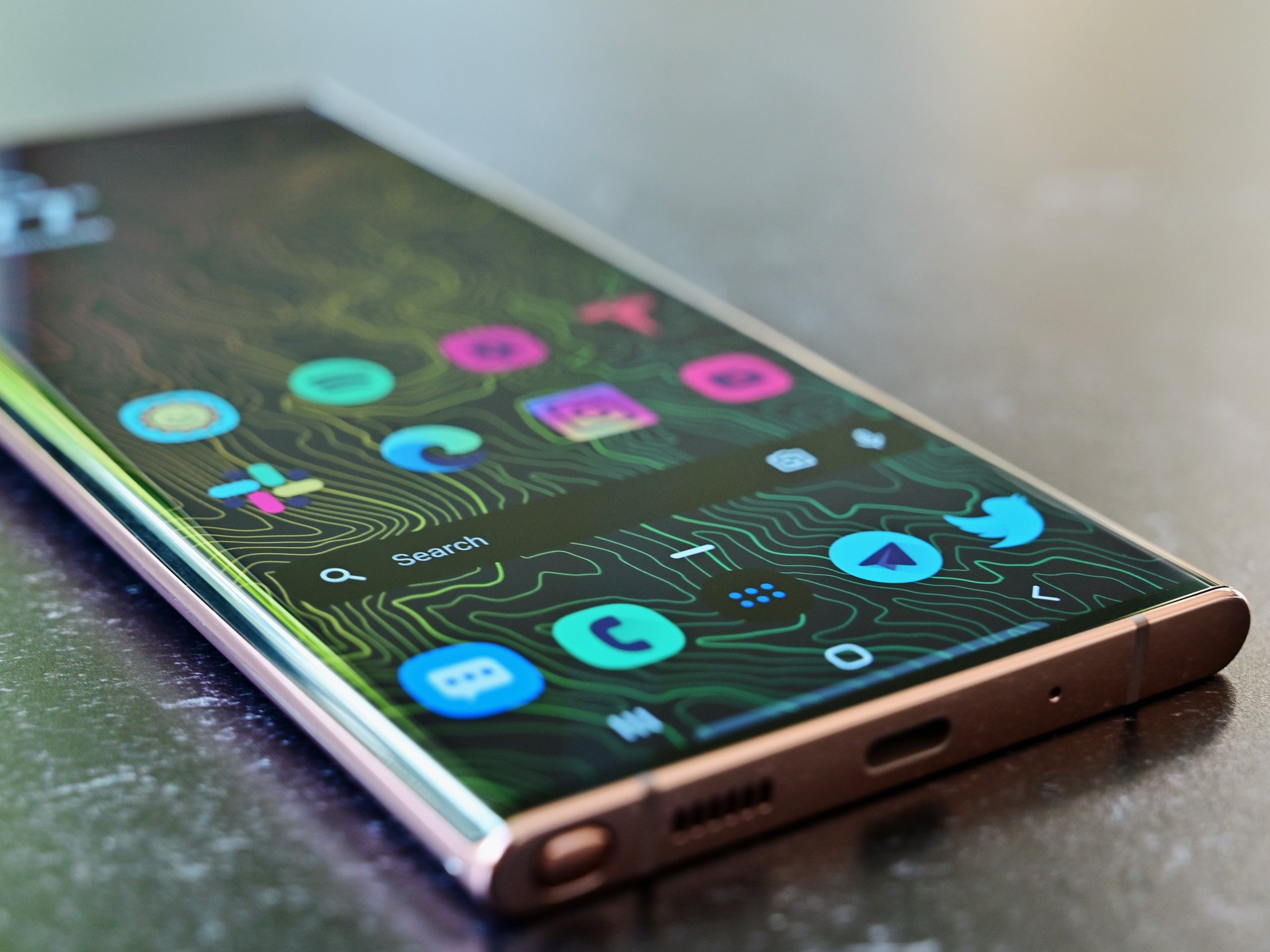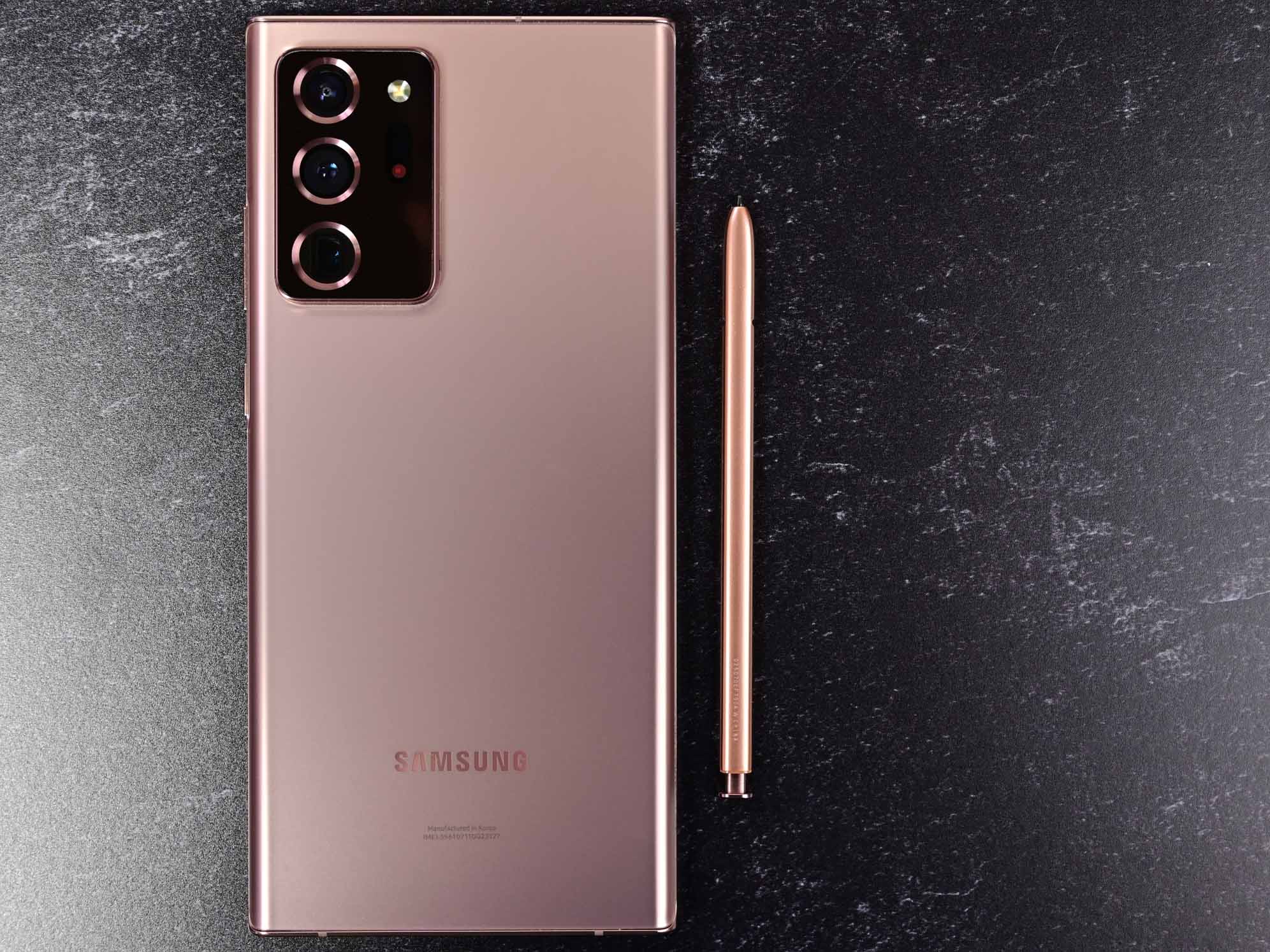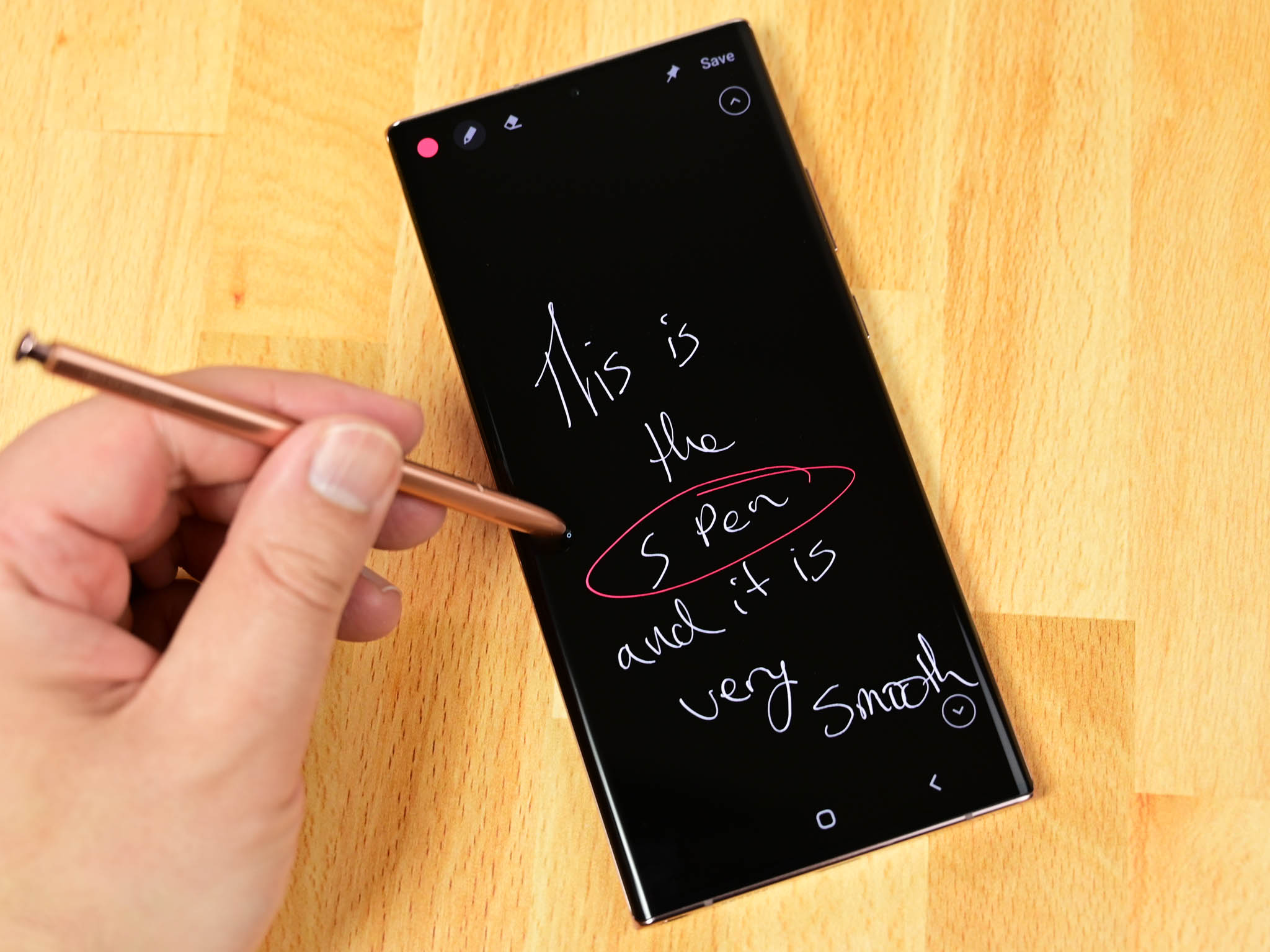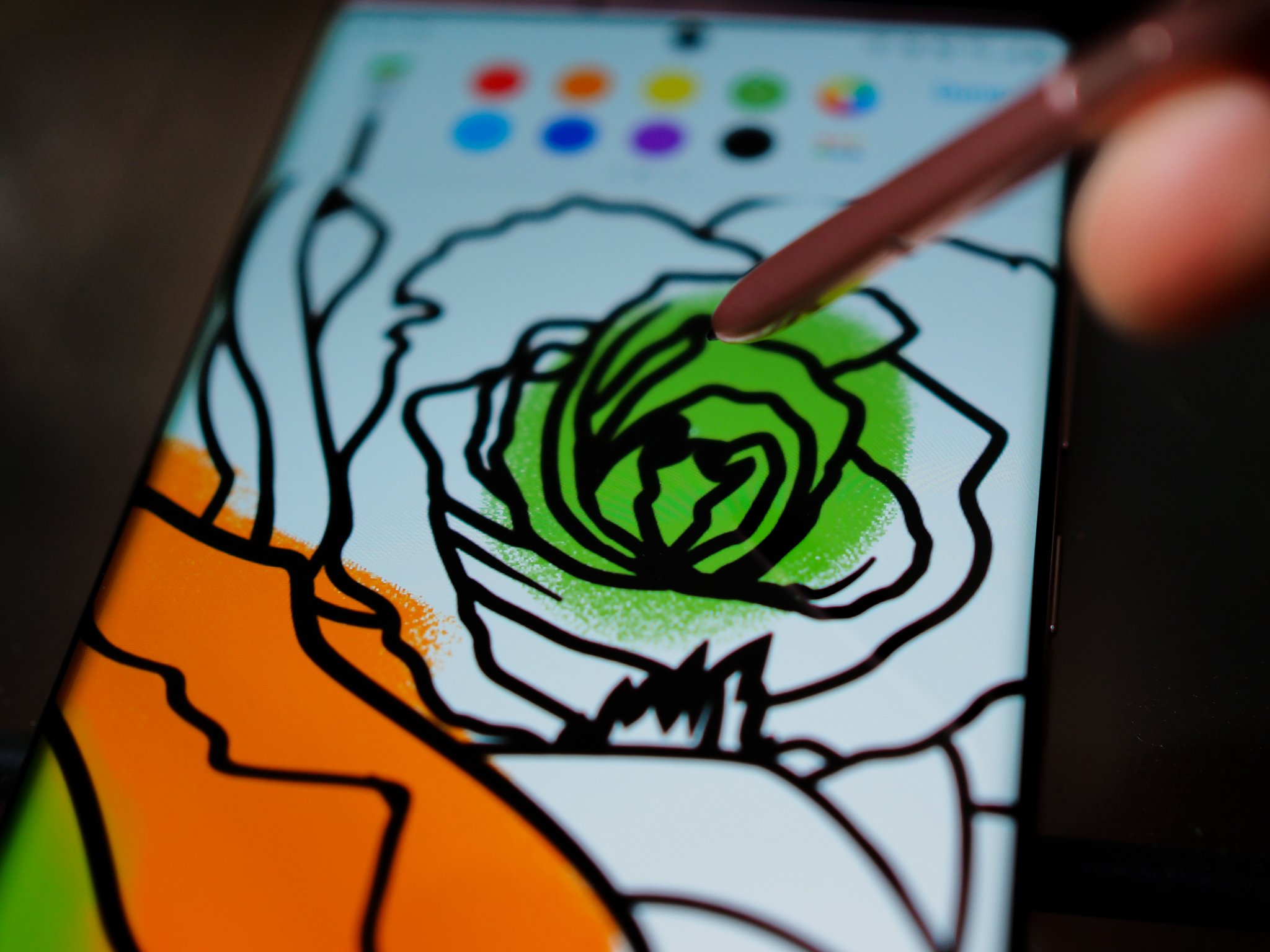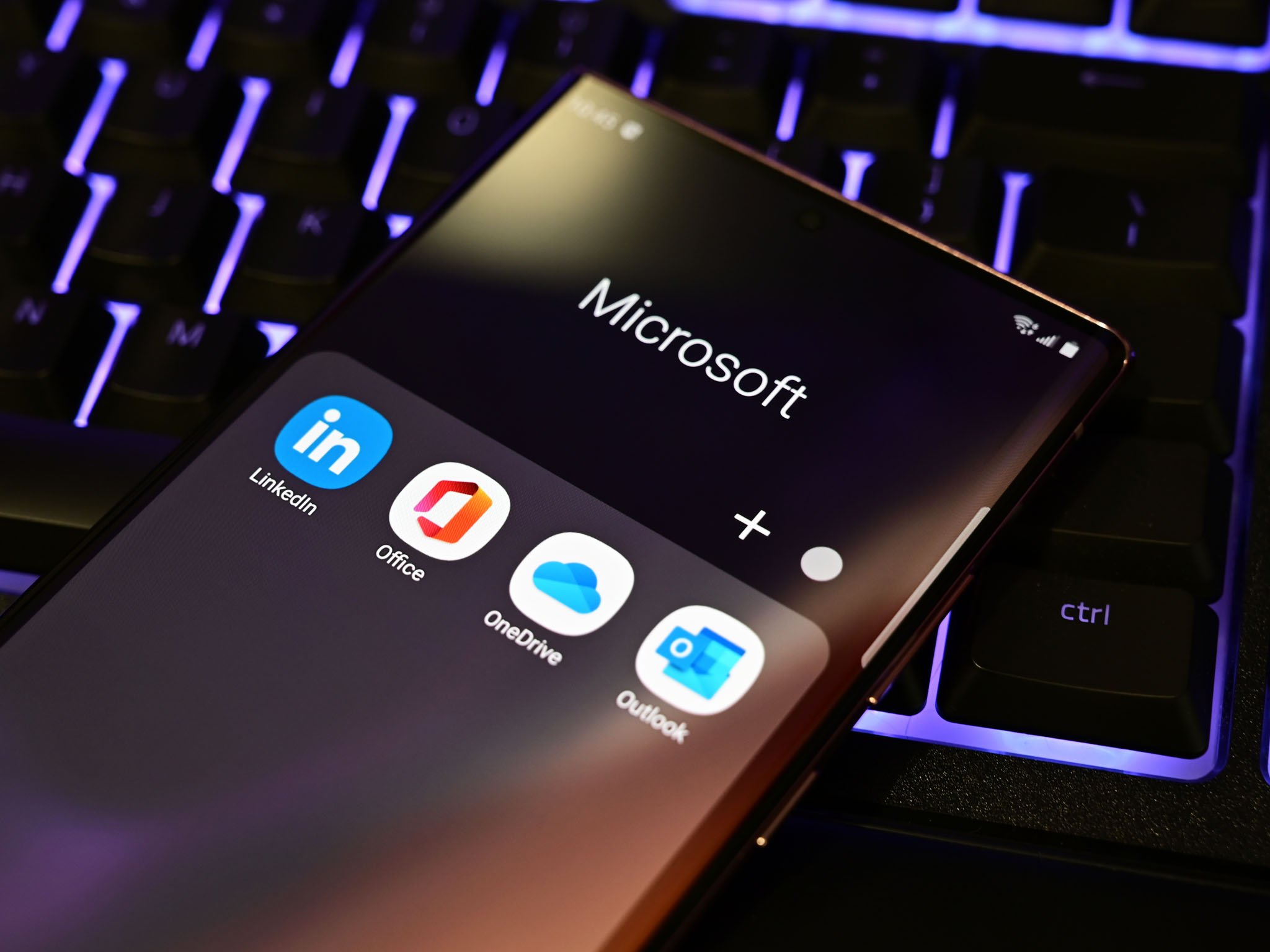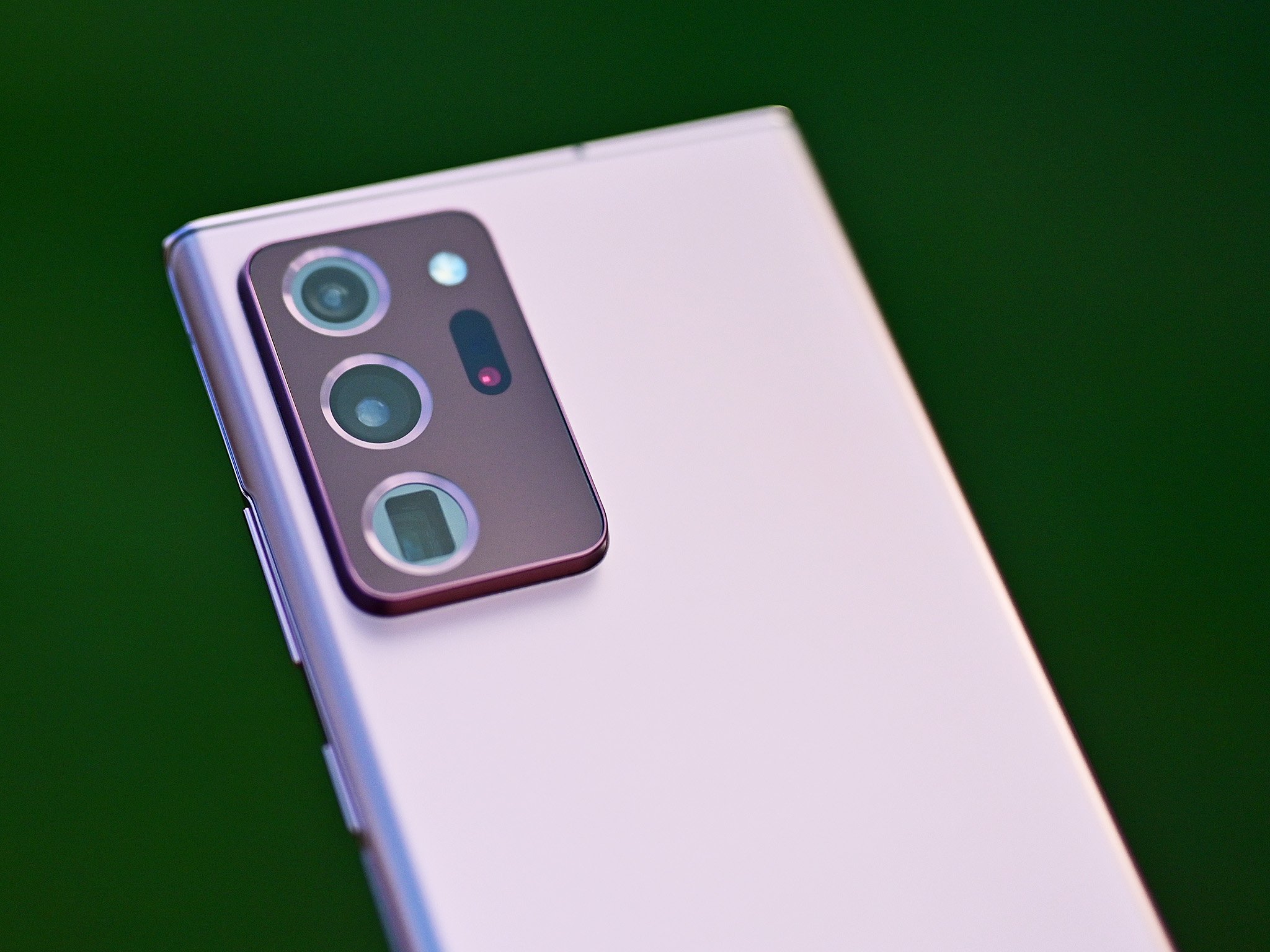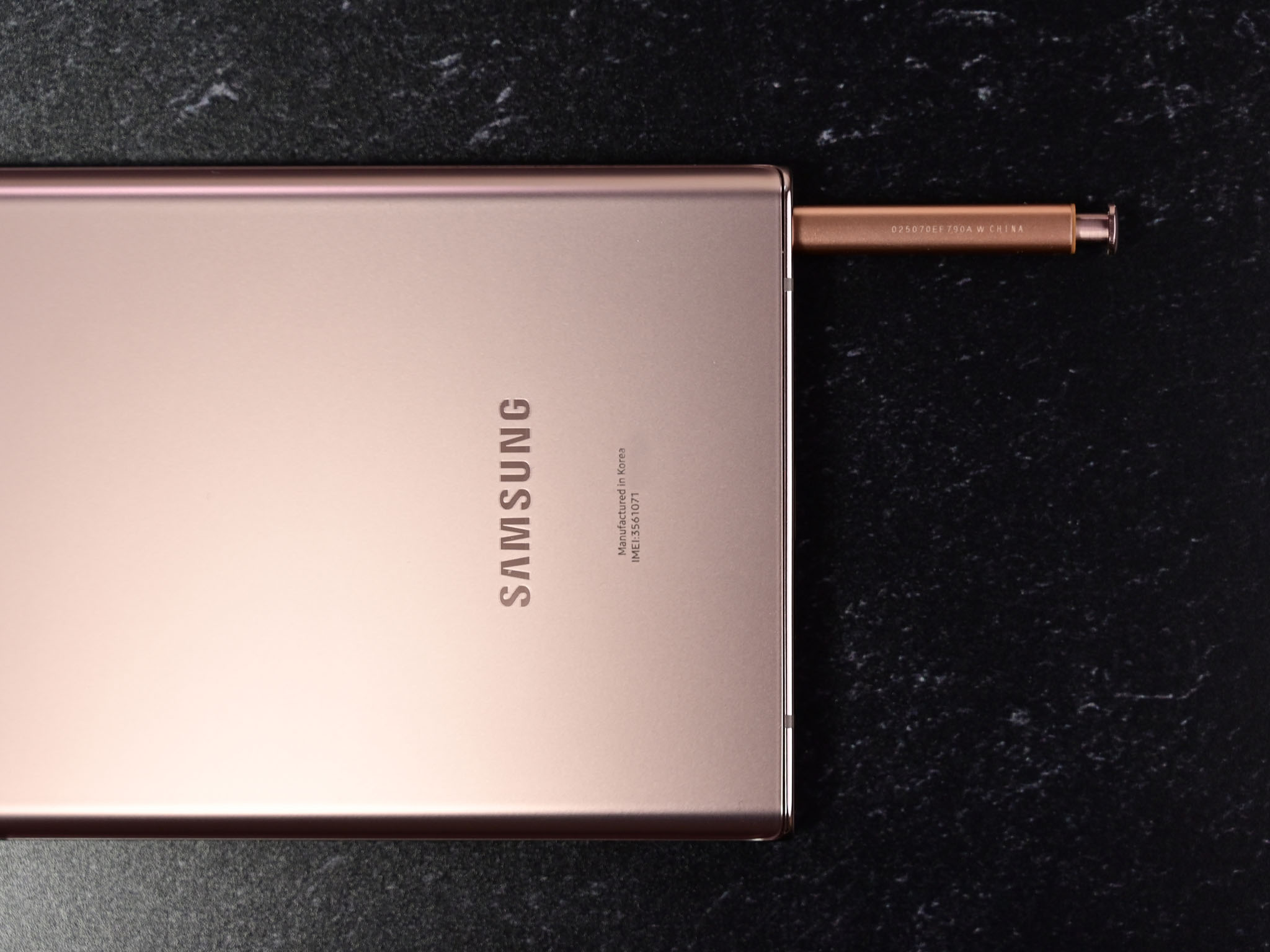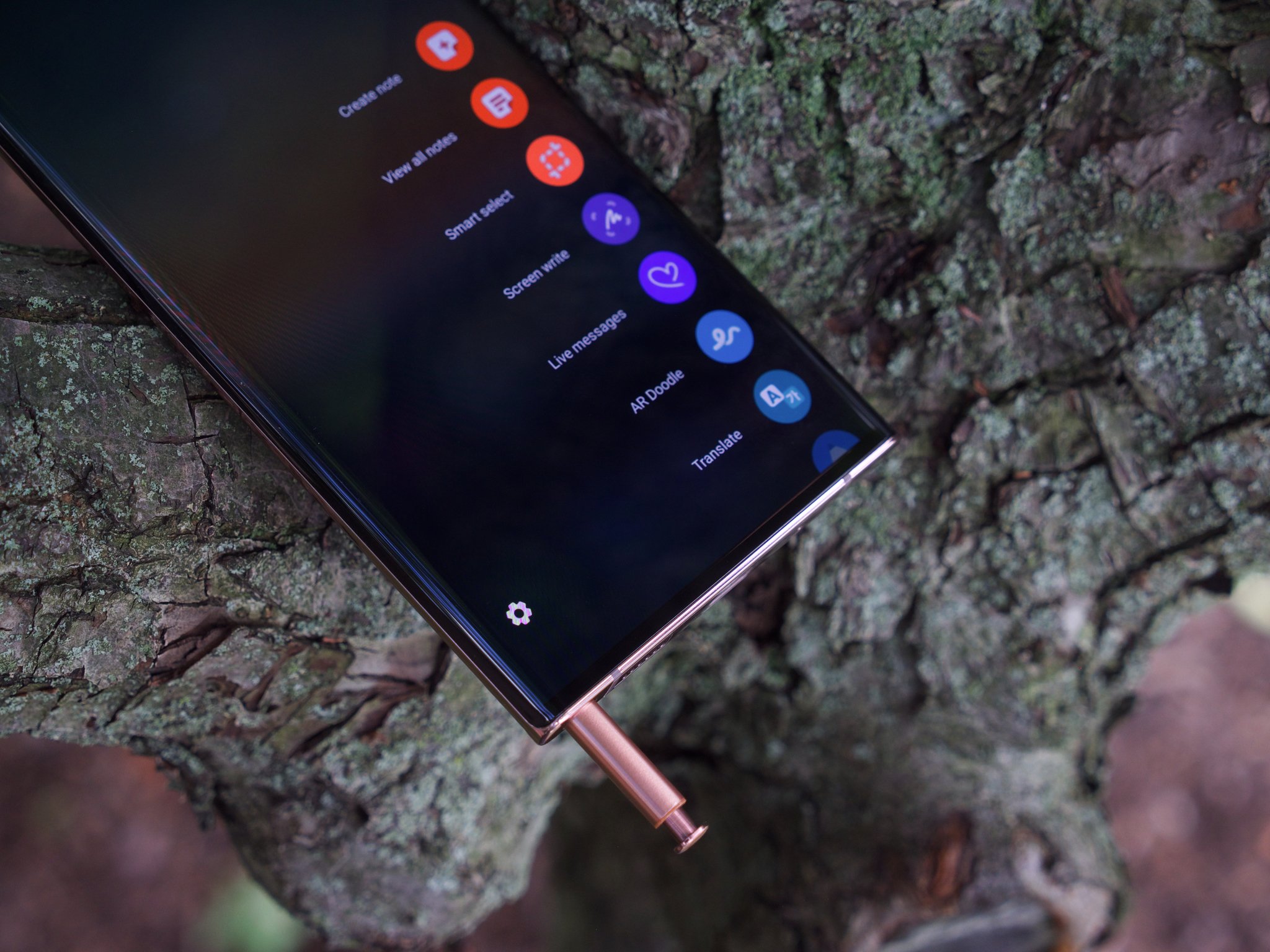With every hardware trick onboard and a dash of Microsoft software, the Note 20 Ultra is the ultimate phone of the year.
At this stage in Samsung's long mobile history, leaks about its upcoming phones are as consistent as the sun rising. New for this year, as fully expected, is the Galaxy Note 20 and Galaxy Note 20 Ultra. While the Note 20 has garnered some mixed feelings the Note 20 Ultra appears to be a near-flawless – albeit expensive – flagship phone for 2020.
I've been using the $1,300 Galaxy Note 20 Ultra for the last few weeks as an upgrade from my 2018-era Galaxy Note 9, and a side-grade from my Galaxy Z Flip. I've always had mixed feelings on Samsung's take on Android but have acknowledged the company gets better with every release. That observation applies to the Note 20 Ultra.
Toss in some good old' Microsoft Link to Windows (aka Your Phone), some preloaded Microsoft apps, game streaming with Project xCloud, and the best hardware in a smartphone and the Note 20 Ultra is easily the top smartphone of the year. I'm struggling to find anything wrong with it. But if don't do a trade-in, that high price for Samsung's top-tier phone is a tough pill to swallow during these uncertain times.
Galaxy S20 Ultra review
- Price & release date
- Hardware & design
- Display
- Battery
- S Pen
- Software
- DeX
- Camera
- Should you buy it?
- Tips & tricks
At a glance
Samsung Galaxy Note 20 Ultra
Bottom line: Combined with Microsoft's increasing growing suite of software, Your Phone, and Xbox game streaming, the Note 20 Ultra is easily the ultimate Android phone of 2020 (that's doesn't have dual screens). With an improved S Pen and the best Samsung cameras yet the Note 20 Ultra is an excellent upgrade for those with a Note 9 or who just want a large, do-it-all smartphone.
The Good
- The best phone display out there
- Impeccable performance
- Excellent camera
- S Pen upgrades
The Bad
- Curved display causes false touches
- Expensive
- Battery life 'good enough'
Samsung Galaxy Note 20 Ultra Price & release date
The Samsung Galaxy Note 20 Ultra is currently available for purchase, starting at $1,300 in the U.S., with an optional $1,400 model available offering 256GB of storage.
It's also available much cheaper if you trade in your current smartphone — Samsung gives up to $650 in trade-in credits if you have a recent Galaxy flagship like the Note 10+ or S20 Ultra — or if you buy it through a carrier. In the U.S., like all Samsung products, the Note 20 Ultra is available at AT&T, T-Mobile, and Verizon, along with smaller regional carriers and MVNOs. And because it's a 5G phone, you'll need a 5G plan to take advantage of the phone's extracellular speeds.
You can get the Note 20 Ultra in three colors: Mystic Bronze, Mystic White, and Mystic Black. We're reviewing the new Mystic Bronze version and think it's the best color for the new phone.
Samsung Galaxy Note 20 Ultra hardware and design
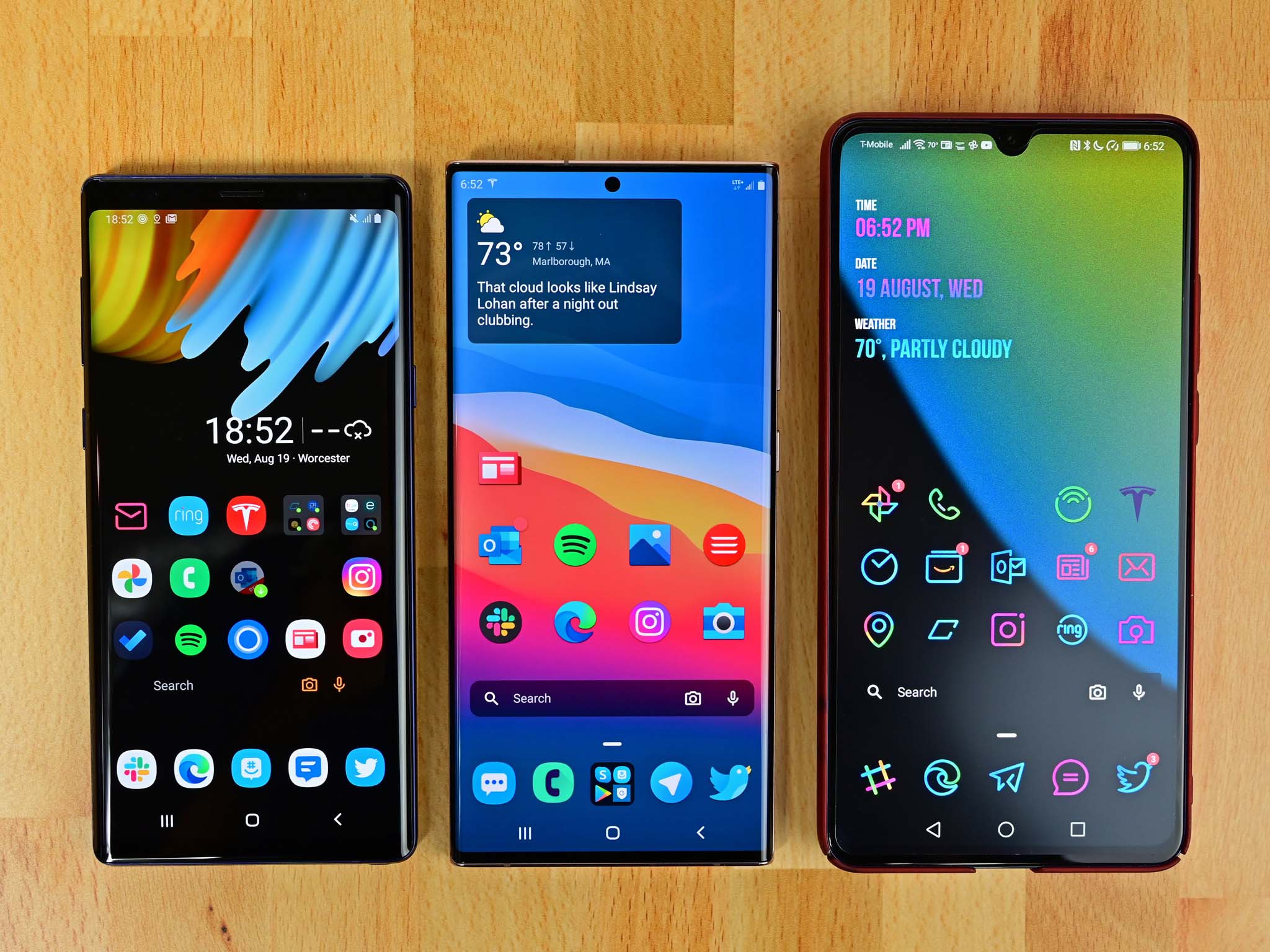 L to R: Galaxy Note 9, Galaxy Note 20 Ultra, Huawei Mate 20X.
L to R: Galaxy Note 9, Galaxy Note 20 Ultra, Huawei Mate 20X.
In many ways, the specs of the Note 20 Ultra are the least exciting part. Samsung checks all the boxes (and I mean all), as you predict for its biggest phone yet. The company has managed to squeeze every bit of new technology into one rather large (but still pocketable!) smartphone. Qi wireless, NFC, three ridiculous rear cameras, one perfect front-facing one, S-Pen, Dolby stereo audio, the latest Corning Gorilla Glass (i.e. 'Victus'), 4G, 5G, Wi-Fi 6 mmWave, and sub6, IP-68, ad nauseum, it's all here in the Note 20 Ultra.
I don't know if there is a phone with more "stuff" jammed in it than this one.
| Category | Galaxy Note 20 Ultra |
|---|---|
| Operating System | Android 10 One UI 2.5 |
| Display | 6.9-inch AMOLED 3088 x 1440 120Hz refresh rate |
| Processor | Qualcomm Snapdragon 865+ |
| Memory | 12GB LPDDR5 |
| Storage | 128GB 512GB |
| Expandable Storage | ✔️ |
| Rear Camera 1 | 108MP primary f/1.8 OIS |
| Rear Camera 2 | 12MP telephoto f/3.0 5x optical zoom |
| Rear Camera 3 | 12MP ultra-wide f/2.2 |
| Front Camera | 10MP f/2.2 |
| Security | In-screen ultrasonic fingerprint sensor |
| Audio | Stereo speakers USB-C |
| Battery | 4,500 mAH |
| Water Resistance | IP68 |
| Dimensions | 77.2 x 164.8 x 8.1mm |
| Weight | 208g |
| Colors | Mystic Bronze Mystic Black Mystic White |
Three main areas make the Note 20 Ultra stand out from many other slab smartphones on the market, which are:
- 108MP rear camera
- 6.9-inch 120Hz adaptive refresh 3088 x 1440 display
- New design, including matte glass back
The camera and display will get its own section, but let's quickly talk about the build quality and that new matte back. Samsung offers three colors, including black, white, and arguably the coolest looking one with bronze. Bronze is this year's rose gold (bronze is making a comeback in mechanical watches too), and while it's an acquired taste, I like it. The back of the Note 20 Ultra is new with a matte, textured glass. The beauty here is, for the first time, the phone does not pick up fingerprints. It also feels great to hold, adding just a bit of smoothness without being slippery. All phones need to do this.
At 208 grams and 165mm tall, the Note 20 Ultra is big, but if you are coming from a Note 9 it's not night and day different. Both phones feel downright similar even if the Note 20 Ultra is a few millimeters taller. The 7 grams of weight difference is unnoticeable.
Is the Note 20 Ultra a big phone? Sure. Is it unmanageable? Definitely not. I've been rocking a Huawei Mate 20X for a while, and that phone is substantially larger. I had no problem carrying the Note 20 Ultra in my front pants pocket or using it in my Tesla Model 3 using a Jeda wireless charging mat, a feat my Mate 20X could not accomplish.
Compared to Note 9, Note 20 Ultra is a bit squarer, and I like the change. While it lacks the curvier display and chassis, it is more comfortable to hold. Samsung has switched sides for everything between Note 9, Note 10, and Note 20 Ultra. On the Ultra, the power and volume keys are on the left instead of split between left and right. The lower speaker and S-Pen are now on the left side instead of the right. None of this impacted my usability, but if you're doing a switch, it will be a little unsettling at first.
Another change from the Note 9 is the fingerprint reader. The Note 9's rear fingerprint reader makes it easier to unlock as you're pulling it out of your pocket and not looking. The Note 20 Ultra's in-screen fingerprint reader is great if a bit slow and lacks haptics. I had no false reads, and with the always-on-display feature for it, it is easy to hit as a target. If you want even faster unlocking, you can enable raise-to-wake and facial I.D., now without slow retina scanning. While fast, such a system is less secure (though I couldn't fool with a digital photo, so there's that). Face ID does not count as a biometric for third-party apps either.
Finally, I'll shout out to Samsung's improving haptic engine. Whether it's typing or using the bottom navigation keys (if you don't prefer gestures), Samsung's haptics are beaten only by Apple. Compared to Note 9, again, it is much better on the Note 20 Ultra.
Should I mention the camera bump? Yes, it is prominent. I also do not care in the slightest, and neither did some current Note owners who I showed this phone too. While the Note 20 Ultra is a bit smidge wobbly when laying flat, it never phased me. Slapping on a case could also help alleviate that concern.
Samsung Galaxy Note 20 Ultra display
I could do a whole article on the display tech, and innovation Samsung puts into the Note 20 Ultra screen. Luckily, I don't have to as DisplayMate did an exhaustive independent evaluation of it giving it the highest rating of A+:
For the Galaxy Note20 Ultra, Samsung has concentrated on significantly raising the on-screen Absolute Picture Quality and Absolute Color Accuracy of the OLED display by implementing Precision Factory Display Calibration, moving the overall Galaxy Note20 Ultra display performance up to Record-Setting Outstanding Levels.
It's bright, it's smooth, and it's very color accurate. The 120Hz adaptive display is hard to resist, but it's also not life-changing either. Apps like Twitter still have shoddy scrolling on Android, and surprisingly, the 120Hz does not do much to help that. For third-party Twitter apps, however, you do notice the difference, so your mileage may vary. Combined with the O.S. and Snapdragon 865+ processor, the Note 20 Ultra is very fluid and responsive to normal interaction usage. It's still not Apple-level fluid, but it's the best Android experience I have had.
OLED has had many improvements over the years. The biggest for me is how it looks more natural, akin to an excellent LCD, rather than over-saturated, high contrast versions from the Note 9 era and earlier.
What I don't love about the Note 20 Ultra is, unlike the regular Note 20, it has the silly curved display with fall-off edges. It doesn't seem as dramatic as Note 9, but while it looks impressive in photos, I don't find any practical benefit. While using Microsoft's SwiftKey keyboard, I would notice frequent "p" insertion into many words due to my accidentally touching the side (luckily, you can "solve" this touch problem with this free third-party app). I appreciate the aesthetics, but I feel a flat display would be more pragmatic. Curved edges are a fad that needs to be put to rest.
Of course, the tradeoff with 120Hz is obvious: battery life…
Samsung Galaxy Note 20 Ultra battery
The battery life of the Ultra's 4,500 mAh battery is OK. My testing involved using the 120Hz adaptive refresh, always-on-display enabled, and 5G left on (though rarely used). On light usage, including firing up the power-hungry camera a few times, I would be at 50 percent by bedtime. But I could see that going way down though if using the Note 20 Ultra with heavy usage. Note 20 Ultra is one of those "good enough" phones, but it also doesn't live up to the "Ultra" moniker for battery endurance.
More real-world numbers reflect about close to six-hours screen time, which is not bad. Knocking down the display to just 60Hz, would, of course, extend that by a few hours. But so far, in my time with the Note 20 Ultra, I never felt I had to do that.
Samsung's quick charge is also decent but expected at this price range. Sure, the included tiny 25-watt wired fast charger is below newer 45-watt options (and not to mention Oppo's new and insane 125W fast charger), but it's still reliable and less risky to battery longevity. Samsung says you should be able to recharge the Note 20 Ultra entirely in about an hour. That rate varies depending on how full the battery is, so at 85 percent capacity, it still takes 27 minutes to recharge fully.
The coils for Qi are also spread out and quite large. I had less fiddling to find the sweet spot when placing it on a charger than my iPhone 11.
Samsung Galaxy Note 20 Ultra S Pen
Samsung does a knockout job with S Pen – even on its well-reviewed laptops. It is one of the smoothest and most accurate pen experiences I have used on any device. The S Pen has been improved for the Note 20 Ultra with noticeably reduced latency for 2020, and it's not trivial.
Sure, Samsung has tossed in some esoteric uses for the pen-like waving it around in the air, using it to "air doodle" in photos, and even useful tasks like a remote shutter for the camera (super handy for selfies-at-a-distance). These are kind of gimmicky, but again, there's no harm here in their existence. While I have no real use for air doodles, I've seen them used on the TikToks, so people are using it in creative ways.
My only problem with the S Pen is I barely use it.
That's an OK dilemma to have, though. Much like Surface Pro X, the beautiful thing about the Note 20 Ultra is if you never use the pen, there's no problem. But that one time you do want to jot down a note, highlight some text, or draw a diagram? Bam, it has been with you the whole time. It is one reason I like the Note series so much. There's comfort in knowing that pen is just always there.
I do question the overall form factor for the Note 20 Ultra for taking notes. I'm most curious to see if Microsoft's Surface Duo is any better at inking than Samsung's take. It's an interesting and diverging hypothesis on digital notetaking, one I'll be testing.
Samsung Galaxy Note 20 Ultra (Microsoft) software
Microsoft and Samsung have been besties on the Galaxy series of phones for a few years now. All it means is a device like the Note 20 Ultra ships with OneDrive, Outlook, Office, and LinkedIn preinstalled (they are optionally installed during the out-of-box experience).
But the partnership goes a bit deeper. Specifically, OneDrive is built into the Samsung photos app letting users auto-backup pics and videos to the cloud. Of course, it's not obligatory, but if you're in deep with Microsoft's ecosystem, it is very welcome. That Samsung Gallery app is incredibly useful too. Features like "convert HEIF images when sharing" is genius. HEIF is a more optimized codec that can save 50 percent or more on sizes of photos, but sometimes apps like Twitter won't recognize them. Samsung solves that automatically. When you have 17MB JPGs, cutting that down to 7 or 8MP is something you'll want to enable.
Users can also log in to their Microsoft Account and Outlook Account under Samsung's settings bringing in calendar and contact support. And yes, that means you can sync your Outlook Calendar to the Samsung Calendar app and vice versa.
Samsung also has its unique version of Microsoft Your Phone dubbed "Link to Windows." The feature is built into the Note 20 Ultra's ROM and settings. Along with a particular system driver, this lets the Note 20 Ultra use ultra-low latency connection to your Windows 10 PC to allow for app streaming.
I used the Link to Windows feature on my desktop PC and numerous laptops, too, dynamically switching between them on the fly. The system worked flawlessly. I was able to view and respond to text messages, take phone calls, view my photo gallery (and save images to the PC), share links and text between both devices, and run Android apps on my computer. Everything is fast and miles ahead of non-Samsung devices. It is a shame non-Samsung phones can't experience this, but there are some technical limitations in effect.
While the forthcoming Surface Duo is arguably the Microsoft phone, Samsung's integration makes it still one of the best traditional smartphone choices for those immersed in Microsoft's ecosystem.
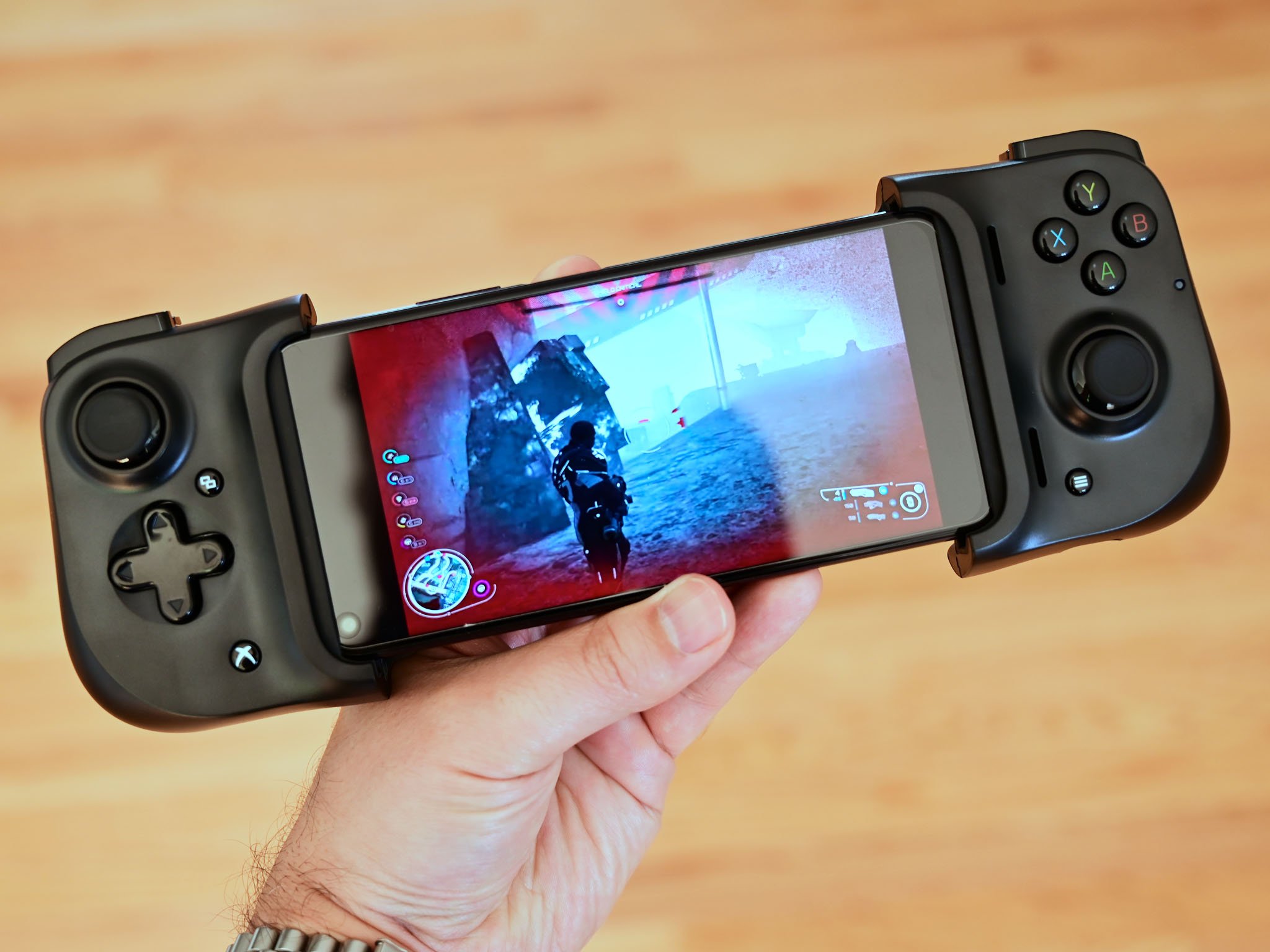 Note 20 Ultra plus Razer Kishi is the perfect match for ultimate mobile gaming.
Note 20 Ultra plus Razer Kishi is the perfect match for ultimate mobile gaming.
Xbox game streaming ("Project xCloud") is not preinstalled, which is a shame, but an easy download from the Google Play store. Tossing the Note 20 Ultra on the Razer Kishi (now with labeled Xbox controls) results in arguably the best mobile gaming experience period. The Kishi is a tight fit, but it works with just a little finesse. The audio is fantastic, the display is massive, and the Kishi makes the Note 20 Ultra a high-end Nintendo Switch. If you are into gaming, the Note 20 Ultra is hard to ignore, especially with that 12GB of RAM.
Samsung Galaxy Note 20 Ultra DeX
I don't want to spend too much time on DeX – Samsung's riff on Microsoft's Continuum concept. It works quite well in that it is reliable, and I had no complications. That's good news.
Wirelessly, I can connect to any modern TV using DeX. The Note 20 Ultra can then act as a mousepad, and it even works with the S Pen as a navigation tool. I could see this when stuck in a hotel, and you want to watch video content on the TV and not your phone. Of course, Samsung recommends 2019-and-later TVs, so good luck with that.
DeX on Windows, seen above in our walkthrough video, works when connecting with a Type-C cable. I was surprisingly shocked to see DeX working on Surface Pro X as Samsung makes you download drivers and a host app to enable DeX for PC.
My issue here is Samsung DeX made sense before Microsoft's Your Phone and Link to Windows. Today I do not see the value it brings. You must install drivers and a separate app, digital media (DRM protected TV, movies, etc.) often cannot play (though it works in Your Phone), and it needs to be wired to work. With the ability to wirelessly stream apps in Your Phone, DeX feels increasingly dated.
Like other Samsung features, there is no harm in DeX being there. But I'm also not sure anyone would miss it were it to vanish. I certainly would not buy the Note 20 Ultra on the assumption that DeX will be used as a daily productivity tool, not when Your Phone is an option.
Samsung Galaxy Note 20 Ultra camera
The main star of the Note 20 Ultra show is hard to ignore: the camera, or rather cameras. Samsung is, again, pushing boundaries this time with a massive 108MP primary sensor. While the company is forsaking its 100x telephoto from the S20 line, the new wide, ultra-wide, and telephoto combo is more realistic. Samsung is also using Laser Auto-focus to speed up focusing on the Note 20 Ultra, which was a sore spot on the S20 line.
Samsung's cameras do something fantastic work, especially in normally lit scenes. The 108MP 4:3 photos are impressive, especially at around 17MB per image. Shooting at 108MP negates the telephoto and ultra-wide lenses but is ideal for attempting some "real" photography. While you don't get an ultra-wide view, you can "zoom to crop," which is where 108MP is convenient. Nonetheless, there are diminishing returns with increased megapixels. Sharing 108MP photos to Instagram, for instance, is unsurprisingly banal due to the downsizing. Those photos just look like regular pics, and no one will know it came from such a big camera.
Image quality is better over the Galaxy Z Flip, which uses some older Samsung camera tech. In the past, Samsung phones have suffered from over-sharpening. I see this effect, especially when I snap photos of my cat. Note 20 Ultra does not have this problem. Indeed, it is almost the opposite: sometimes photos seem too soft. At least you can sharpen the image in post.
Colors are also mostly accurate, and I did not experience "Samsung saturation" where color is overdone to a near cartoonish level. That Samsung effect returns, however, if you use the auto-fix feature in the Samsung Gallery app.
Switching the camera out of 108MP, the three lens combos are fun. Though used less frequently, the telephoto is a nice feature to have, but it's the ultra-wide that is more amusing. I'll also mention that depth-of-field with the primary sensor is remarkable, resulting in photos that look like they're from a DSLR.
Low light images are also particularly good, but they get a bit weird when textures are involved. Samsung has made significant strides, though against the king of low-light imagery the Pixel 4.
The 10MP front-facing camera is also gratifying. There is the ability to switch to a two-person mode for wider shots, and the Live Focus feature, which simulates bokeh, is some of the best I have used with noticeably improved edge detection.
Samsung Galaxy Note 20 Ultra Should you buy it?
Who it's for
- Current Galaxy Note 9 (or earlier) users
- Someone looking for an all-in-one smartphone
- If you like the idea of using a pen to doodle or take notes
- Photography nerds
Who it's not for
- Those with small hands, pockets, or budgets
- Note 10+ owners
- People who hate awesome things
Samsung's S20 series made waves earlier this year, but the Note variants are almost always better due to the more refined software and time to bake. That holds here. There is also no real competition against the Note 20 Ultra, especially in the U.S., where rivalries from Chinese Android makers like Huawei have been vanquished.
I've been a skeptic of Samsung's Android phones for years. It wasn't until the Galaxy S6 Edge that I began to see the genius in its hardware (and where its camera impressed me for the first time). Note 9 captivated me so much I bought it while traveling at IFA Berlin 2018 on the fly. But Samsung's take on Android and the "jam it all in there" approach to software, always left me yearning for more simplistic experience from OnePlus, or even Huawei. Starting with the Z Flip and now the Note 20 Ultra, that feeling has changed. I was happily shocked at how few Samsung apps were preinstalled on this unlocked model.
The Note 20 Ultra is a nearly flawless device. It's also launching at one of the worst times in economic history, with many people unable to drop the massive $1,300 for the experience. Samsung, like others, is offering good trade-in deals, which helps with that sticker shock. But, unfortunately, 5G here is disappointing due to the current stage of deployment in the U.S. All of that makes it hard to recommend the Note 20 Ultra to regular folks. It is nearly impossible if you're already rocking a Note 10+ from last year. If you're coming from a Note 9, the upgrade here is welcomed, but probably won't be life-changing either.
But a fun experiment to try is asking a simple question: If price did not matter, would you want the Note 20 Ultra? The answer is an absolute yes. Its price is its only "flaw," and I use that loosely. Samsung has put in all the cutting-edge hardware you expect in 2020, and its take on Android and software has finally matured to a level that even I feel right at home.
If you want it all and prefer Android, the Note 20 Ultra is your best bet. It's pure joy. Just don't pay full price for it.
Noteworthy
Samsung Galaxy Note 20 Ultra
From $1,300 at Samsung From $1,300 at Amazon From $1,300 at Best Buy
The Note that does it all
It's not cheap, but the price is justified by how much you get jammed into this svelte, good looking phone. With all the latest bells-and-whistles, Microsoft integration, gorgeous all-around hardware, and an impressive camera package, Note 20 Ultra is the ultimate smartphone of 2020.
Samsung Galaxy Note 20 Ultra Getting started with your new phone
It's safe to say that the Galaxy Note 20 Ultra is a beastly phone. Whether you're brand new to the Note series or are coming from a model that's a few years old, chances are you'll need some help navigating through all of the phone's best features, and deciding which accessories to buy.
Cases and accessories
If you're in the market for a case, Android Central rounded up the best Galaxy Note 20 Ultra cases, and are updating their list weekly as more options become available. They also have a roundup of the best screen protectors for your Note 20 Ultra if the one that comes with your phone isn't enough.
As for accessories, Android Central rounded up the best wireless chargers for your new Note 20 as well as the best microSD cards so you can expand your storage.
Finally, if you're still not sure which Note 20 Ultra variant to buy, they have a guide to help you choose the best Galaxy Note 20 Ultra color options.
Features you should know
The Note 20 Ultra has an absolutely gorgeous AMOLED display, and while the stark white background of the user interface looks great during the day, it can be rather blinding at night. This is where dark mode comes into play, which replaces all of those white backgrounds with sleek black ones. It's easy on the eyes, looks fantastic, and can even help you conserve some battery life if you're in a pinch.
We also recommend setting up Samsung Pay on the phone. Samsung Pay is one of the most capable mobile payment solutions on the market, as it works with both NFC and MST technologies. In simpler terms, this basically means that you can use the Note 20 Ultra with Samsung Pay at virtually any store you go to. There are still plenty of retailers/shops in the U.S. that haven't adopted payment terminals with tap-and-pay technology, but Samsung Pay is still able to work at these places just fine.
Other features you'll want to explore are Samsung Health and Samsung DeX. The former is basically Samsung's alternative to the Fitbit app, giving you a platform for tracking your steps, exercise, and more. With DeX, you can plug your Note 20 Ultra into a computer monitor (or connect it wirelessly to a supported television), see a desktop-like interface, and use your phone as a mobile workstation that's designed to help you get as much work done as possible.
via https://AiUpNow.com August 21, 2020 at 10:01AM by Daniel Rubino, Khareem Sudlow,
